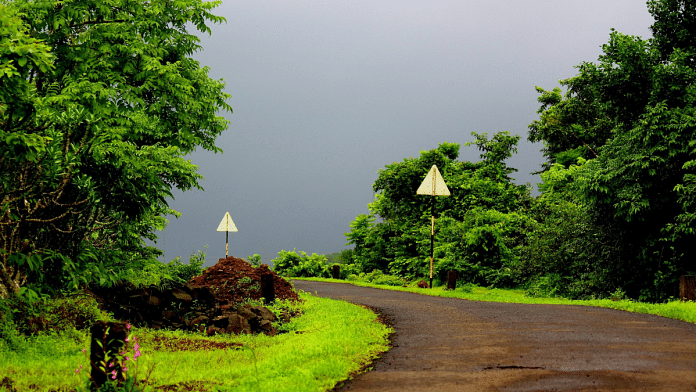New Delhi: The country is expected to get above-normal rainfall in the 2024 monsoon, the India Meteorological Department (IMD) has said.
Announcing its forecast for the southwest monsoon, the IMD said more than 80 percent of the country would see above 87 cm of rain from June to September this year.
IMD chief M. Mohapatra also said that according to their calculations, La Nina, the weather phenomenon that strengthens trade winds over the Pacific Ocean and affects climate worldwide, would start sometime in August or September.
“This is good news for Indian rains, as La Nina usually means favourable rainfall,” Mohapatra told the media in a press conference on Monday.
The IMD said India would receive 106 percent of the 87 cm of rain — which is the long-period average rainfall in the country — as opposed to the 96 percent predicted last year.
The majority of the signal received by the IMD’s sensors point towards favourable rainfall in the country this year, said M. Ravichandran, secretary, Ministry of Earth Sciences. However, certain areas like parts of northern India could not be accurately predicted, as the signal received was weak or indecisive.
In terms of the spatial distribution of the monsoon, the IMD’s map showed that around 80 percent of the country, including Delhi and Mumbai, would receive above-normal or excess rainfall.
Some areas like Odisha, northeastern states and Kashmir wo;; receive below normal rainfall. As for the state-specific forecasts such as Kerala and Karnataka, the IMD said it would announce these sometime during mid-May.
Apart from the SW monsoon forecast, the press conference also gave information about El Nino and its present state. El Nino and La Nina are climate phenomena that cause trade winds over the Pacific Ocean either to weaken or strengthen, causing weather changes across the world.
Currently, the IMD said, the 2023-24 El Nino is in moderate condition, and is expected to wane by the beginning of the monsoon season in June. After the El Nino phenomenon, the La Nina is expected to start and is usually associated with a normal monsoon season. as shown by the IMD’s analysis of Indian monsoons since 1954.
In the past 70 years, most monsoons that have occurred during La Nina have seen normal or above normal rainfall, IMD data showed. There have been nine times in the past when monsoons have been preceded by a waning El Nino and an incoming La Nina — like the expected 2024 southwest monsoon. According to the IMD, all of these years had either excess or above-normal seasonal rainfall.
Mohapatra said there wasn’t any one particular reason when asked why there would be below-normal rainfall in parts like Odisha or the northeast. “The Indian monsoon is a complex large-scale process that is affected by a number of factors and it will be difficult to attribute one particular reason to an event.”
Mahesh Palawat of the private weather forecast company Skymet, however, told ThePrint that over the last few years, the northeastern states of India which “historically have received good rainfall” were witnessing a change in their monsoon patterns.
“While they still get decent rainfall, it does not come up to the daily average so as a whole there’s a deficit in rain in the northeast,” he said. Palawat said there haven’t been comprehensive studies of this yet, but climate change or global warming could be contributing factors.
(Edited by Tikli Basu)
Also read: ‘Killer’ cold waves in oceans lead to migration of marine species, finds Nature Climate Change study



